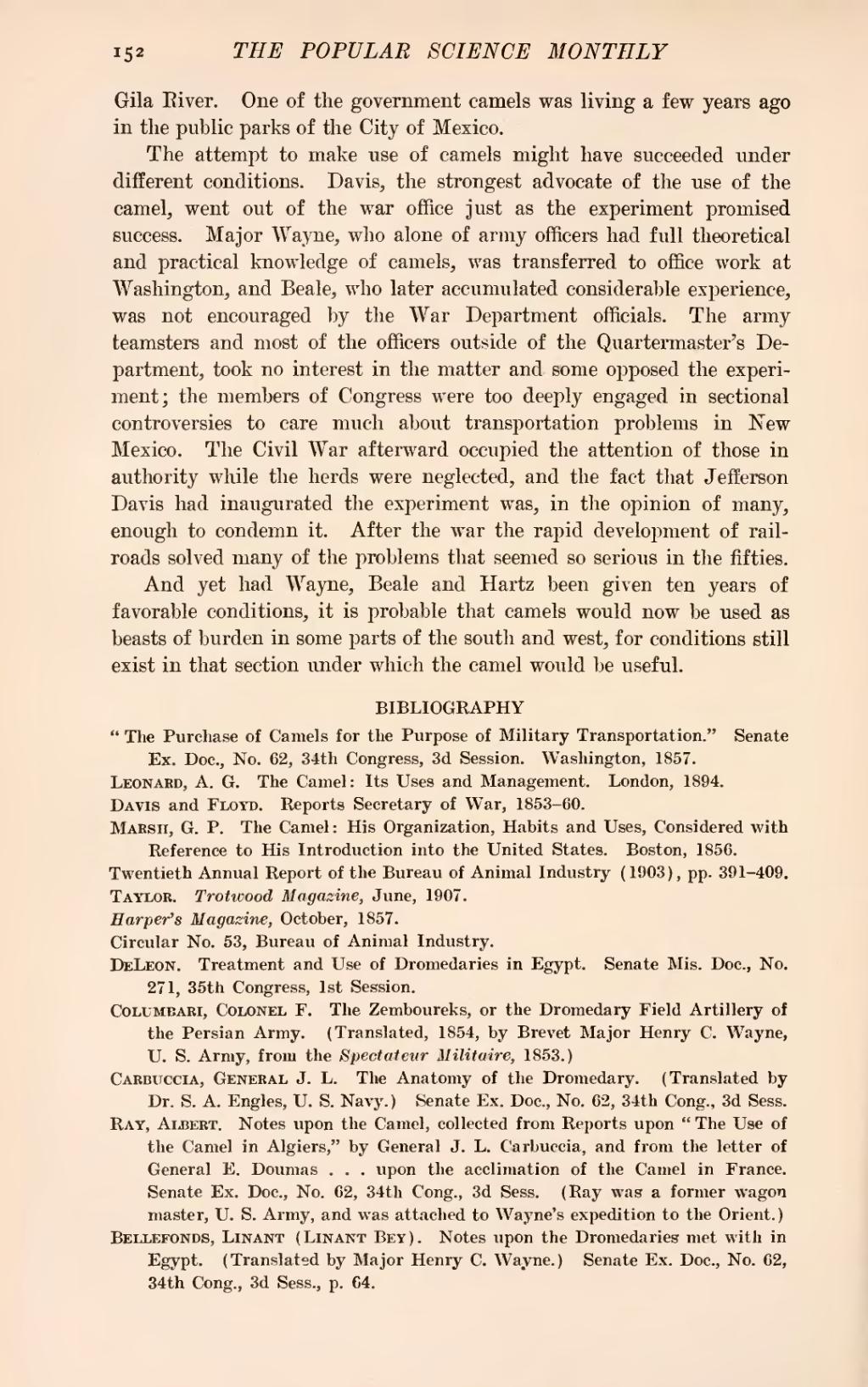Gila River. One of the government camels was living a few years ago in the public parks of the City of Mexico,
The attempt to make use of camels might have succeeded under different conditions. Davis, the strongest advocate of the use of the camel, went out of the war office just as the experiment promised success. Major Wayne, who alone of army officers had full theoretical and practical knowledge of camels, was transferred to office work at "Washington, and Beale, who later accumulated considerable experience, was not encouraged by the War Department officials. The army teamsters and most of the officers outside of the Quartermaster's Department, took no interest in the matter and some opposed the experiment; the members of Congress were too deeply engaged in sectional controversies to care much about transportation problems in New Mexico. The Civil War afterward occupied the attention of those in authority while the herds were neglected, and the fact that Jefferson Davis had inaugurated the experiment was, in the opinion of many, enough to condemn it. After the war the rapid development of railroads solved many of the problems that seemed so serious in the fifties.
And yet had Wayne, Beale and Hartz been given ten years of favorable conditions, it is probable that camels would now be used as beasts of burden in some parts of the south and west, for conditions still exist in that section under which the camel would be useful.
BIBLIOGRAPHY
- "The Purchase of Camels for the Purpose of Military Transportation." Senate Ex. Doc, No. 62, 34th Congress, 3d Session. Washington, 1857.
- Leonard, A. G. The Camel: Its Uses and Management. London, 1894.
- Davis and Floyd. Reports Secretary of War, 1853-60.
- Marsh, G. P. The Camel: His Organization, Habits and Uses, Considered with Reference to His Introduction into the United States. Boston, 1856.
- Twentieth Annual Report of the Bureau of Animal Industry (1903), pp. 391-409.
- Taylor. Trotwood Magazine, June, 1907.
- Harper's Magazine, October, 1857.
- Circular No. 53, Bureau of Animal Industry.
- DeLeon. Treatment and Use of Dromedaries in Egypt. Senate Mis. Doc, No. 271, 35th Congress, 1st Session.
- Columbari, Colonel F. The Zemboureks, or the Dromedary Field Artillery of the Persian Army. (Translated, 1854, by Brevet Major Henry C. Wayne, U. S. Army, from the Spectateur Militaire, 1853.)
- Carbuccia, General J. L. The Anatomy of the Dromedary. (Translated by Dr. S. A. Engles, U. S. Navy.) Senate Ex. Doc, No. 62, 34th Cong., 3d Sess.
- Ray, Albert. Notes upon the Camel, collected from Reports upon "The Use of the Camel in Algiers," by General J. L. Carbuccia, and from the letter of General E. Doumas . . . upon the acclimation of the Camel in France. Senate Ex. Doc, No. 62, 34th Cong., 3d Sess. (Ray was a former wagon master, U. S. Army, and was attached to Wayne's expedition to the Orient. )
- Bellefonds, Linant (Linant Bey). Notes upon the Dromedaries met with in Egypt. (Translated by Major Henry C. Wayne.) Senate Ex. Doc, No. 62, 34th Cong., 3d Sess., p. 64.

